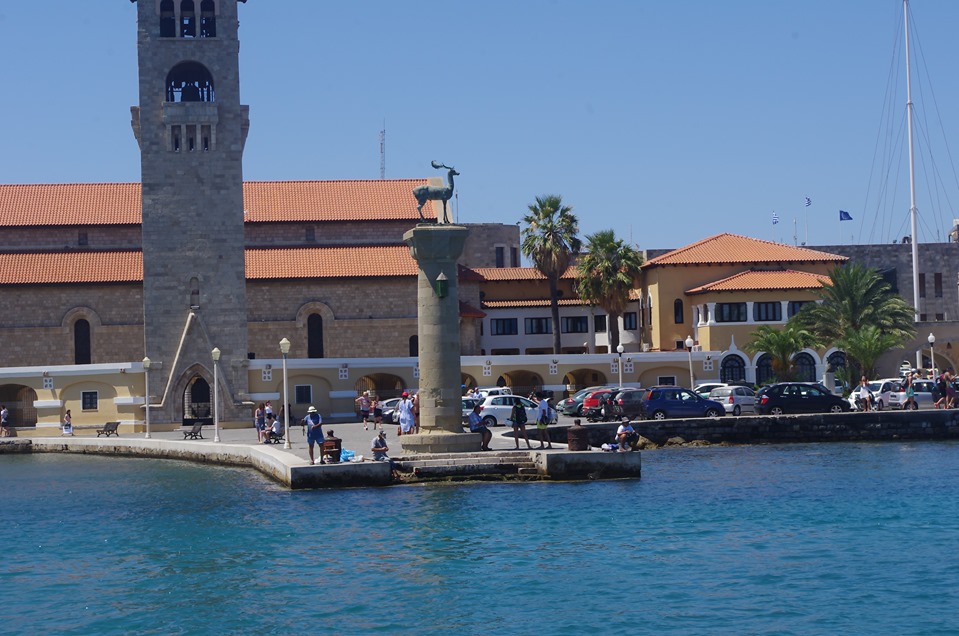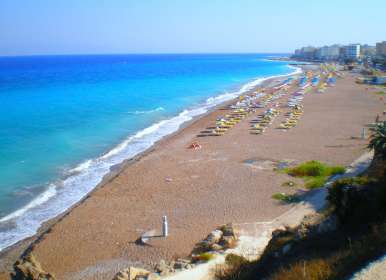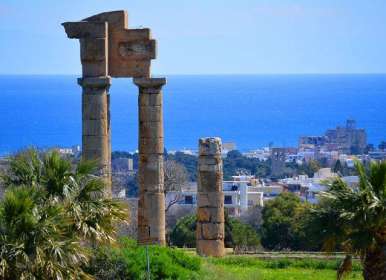
Rhodes City Center
In the new town of Rhodes, its capital, you will find the commercial centre, hotels, cafés, restaurants and clubs.
The settlement started developing after the island was occupied by the Ottomans, when Christians were not allowed to live within the fortified town. At nights, the Ottomans would close the wall gates and Greeks who ran their shops there were forced out. This measure remained in force until 1908. In the fields of Mandraki, the Greeks built their small houses, one adjacent to the other. These old neighborhoods were called marasia, but only a few remains survive today.
The seaside road of Mandraki, lined with the imposing Italian public buildings, bears the signature of governor Mario Lago and head architect Florestano di Fausto.
The New Market is a huge polygonal building of Arabic style. Both its atrium in the interior and its sides on the outside are full of stores, travel agencies, cafés, coffee houses, restaurants and souvlaki joints. The bus terminals and taxi stands are out of the Market.
South of the New Market, you will come across Rimini square, adjacent to the Grand Master Palace gardens. There, in an outdoor theatre, the show called “Sound and light” is being performed every night, presenting the history of Rhodes in various languages.
THE FORTRESS OF ST. NICOLAS. It stands at the pier’s end in the port of Mandraki. It was built by the duke Philip of Burgundy in 1464-67. Previously, there was only a small chapel dedicated to Saint Nicolas at the same place, which was turned into a fort by the Egyptians when they invaded and was used to bomb the town. The walls around the fort of Saint Nicolas were built by Grand Master Pierre d’ Aubusson, who also restored the damage suffered by the fort during the Turkish besiege in 1480. The fort was transformed into a lighthouse by the Turks and survives to present day.
At the same pier, which is ideal for an evening stroll, there are also three windmills, dated from the 15th century. They were used to grind the grains transported by commercial ships.
The port of Mandraki is shallow, appropriate only for cutters and small boats touring the beaches of Rhodes and neighbouring islands. At its entrance, over two high limestone pillars, stand the symbols of the island: a copper deer and a copper doe. The Italians had replaced the doe with a she-wolf (the she-wolf that suckled Remus and Romulus, symbol of Rome). According to tradition, which is probably unsubstantiated, Colossus was once standing at the same place. Ships would cross the sea under its feet and the passage would close at nights with the use of a chain. Nevertheless, archaeologists believe that Colossus used to stand at the place of the Grand Master Palace. The Big Port is located next to the port of Mandraki. Ferries anchor there. The tower of Naillac used to stand on its eastern pier, but it was destroyed by the earthquake of 1863. It was 37-metres high, but only its foundation survives today. In the port of Akandia the new marina of Rhodes is situated.

Free WiFi
On the bus

Wheelchair Accessible

Audio guide
Headphones



